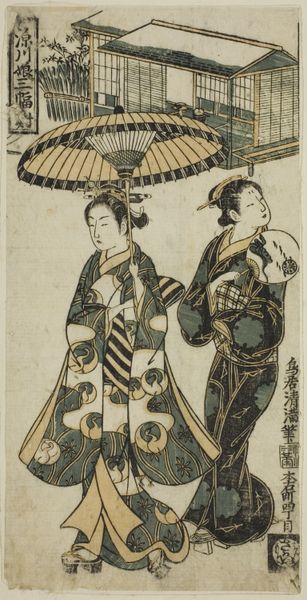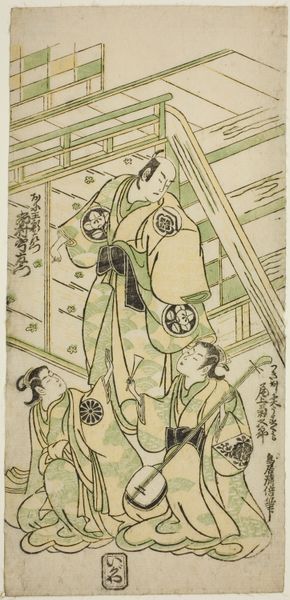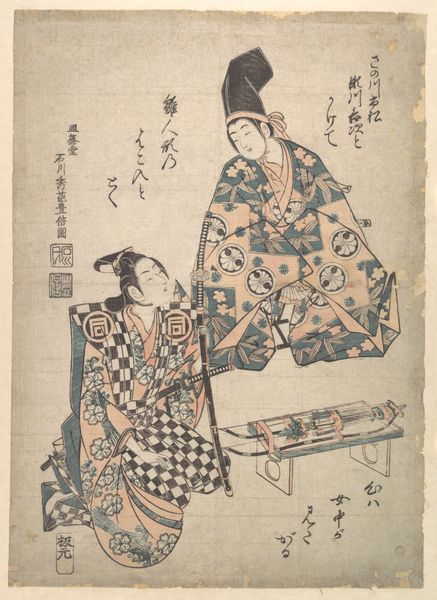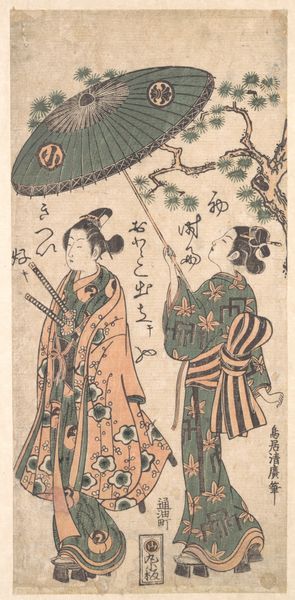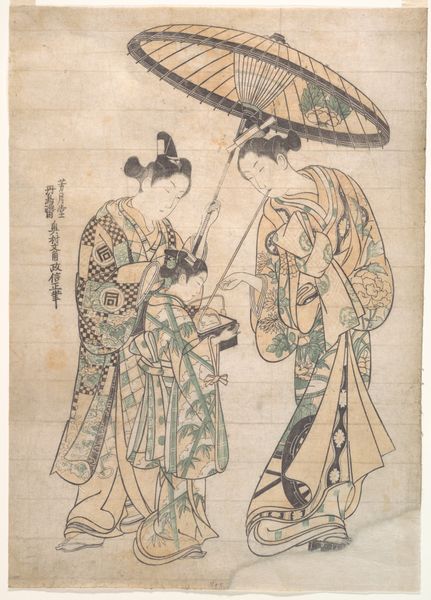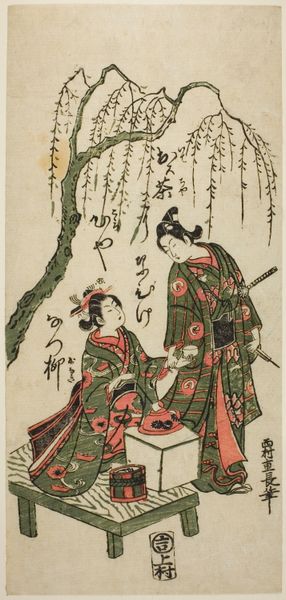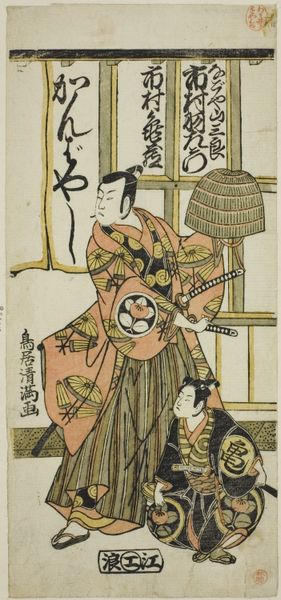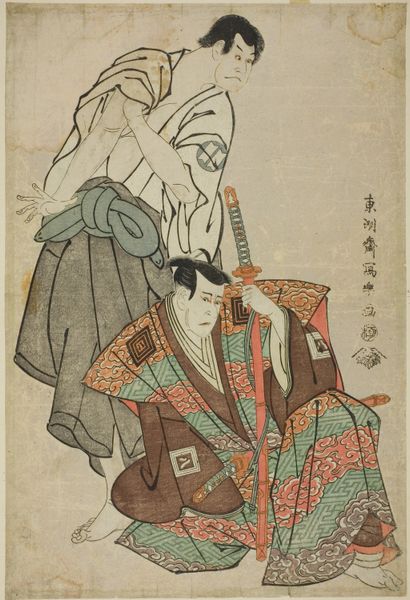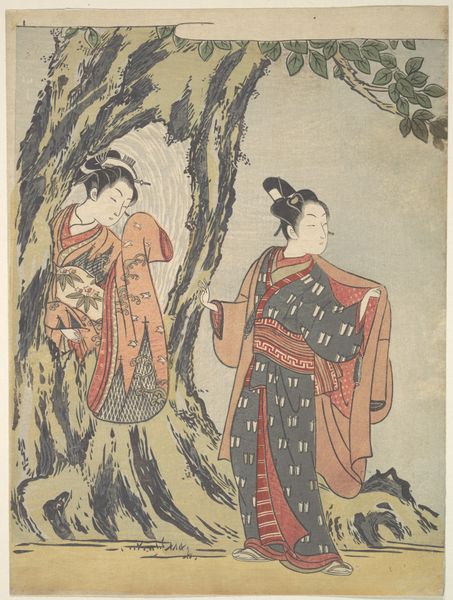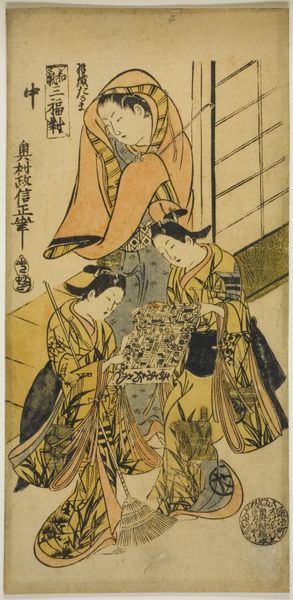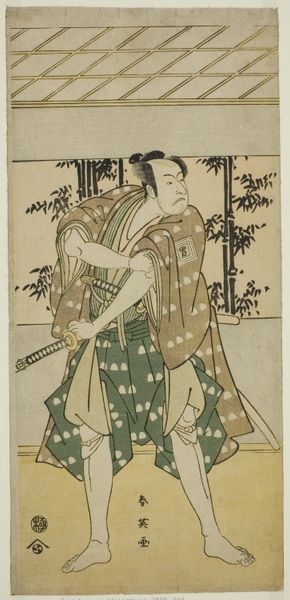
print, woodblock-print
#
portrait
# print
#
pen sketch
#
asian-art
#
ukiyo-e
#
woodblock-print
#
genre-painting
Dimensions: H. 12 1/8 in. (30.8 cm); W. 5 1/2 in. (14 cm)
Copyright: Public Domain
Curator: Torii Kiyohiro’s woodblock print, "The Actor Nakamura Kumetaro I as an Oiran," likely created between 1746 and 1766, showcases the theatrical world of Edo-period Japan. It is currently housed at The Metropolitan Museum of Art. Editor: The constrained color palette gives it a feeling of being understated elegance, but those intricate robes create such a lovely dynamic pattern against the flat ground. The placement of the two figures is nicely done. Curator: Indeed. Note how the formal structure utilizes flat planes of color and a distinct linear quality, common in Ukiyo-e prints, reinforcing a constructed reality over naturalistic representation. How do you see that fitting within the broader context of image production and representation? Editor: The portrayal of Nakamura Kumetaro I as an Oiran highlights the fluidity of gender roles in Kabuki theater. It was a time when theater culture became a strong social outlet, not without certain political and social constraints, of course. These images themselves were part of a bustling media landscape, widely consumed by an expanding urban audience that created a specific celebrity culture of Kabuki actors. Curator: Observe how Kiyohiro employs bold outlines to define shapes, enhancing the visual impact. These aren’t merely representations, they are performative acts encoded into visual forms. Editor: The choice to depict an actor in the guise of a high-ranking courtesan offered a glimpse into a world of luxury and performance but, was also, a powerful endorsement of certain behavioral archetypes. Its value isn't just aesthetic but it also highlights societal norms and expectations through theatrical roles. The celebrity portrait had clear functions within economy and distribution too. Curator: So, beyond the surface depiction, we can interpret this work as a system of signs reflecting artistic conventions. It’s like a dialogue, where elements speak to one another, structuring the piece beyond its literal subject. Editor: Right, because, in turn, those signs acted to normalize those exact performances, and circulate actors' reputations. Thank you for bringing those details into the frame. I'll definitely think about those dimensions going forward.
Comments
No comments
Be the first to comment and join the conversation on the ultimate creative platform.
